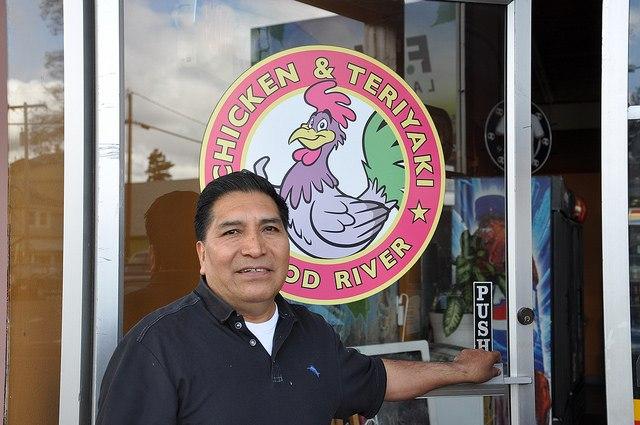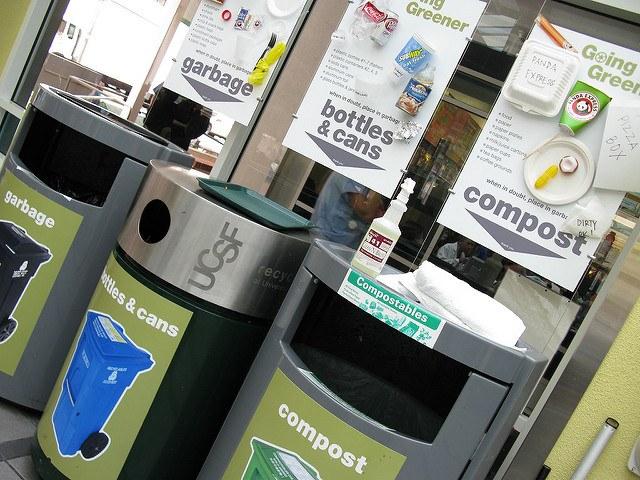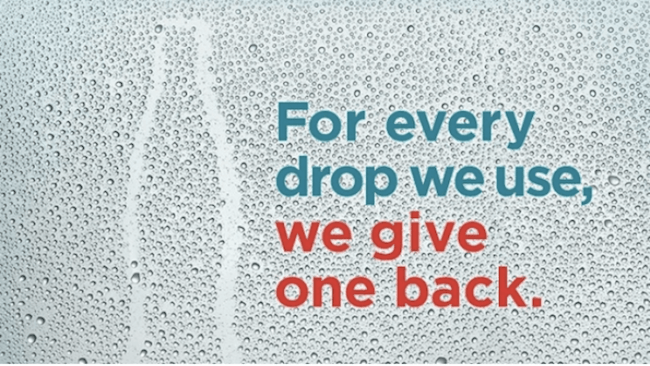Calling All Startup Entrepreneurs: Worker Visa Program Helps Expand New Businesses


If President Barack Obama is successful, an innovative work visa program will soon be underway to help encourage business startups in the U.S. The White House says the new provision, called the International Entrepreneur Rule, won't just help individuals continue to build their businesses, but it will also economically strengthen American communities.
The newly proposed Homeland Security rule, now in comment period, could help as many as 2,100 immigrants per year stay in the country while they expand or improve their businesses. It essentially uses existing provisions to help broaden opportunities for entrepreneurs who can demonstrate solid investments and partnership/ownership in existing businesses.
Under the new rule, applicants must meet the following criteria:
- Have a significant ownership interest in the startup (at least 15 percent) and have an active and central role to its operations;
- Have a startup that was formed in the United States within the past three years.
- The startup in question must have "substantial and demonstrated potential for rapid business growth and job creation."
The startup's substantial potential can be demonstrated by one of three ways:
- Producing evidence of significant capital investment (at least $345,000) from certain qualified U.S. investors with established records of successful investments;
- Existence of awards or grants (at least $100,000) from certain federal, state or local government entities; or
- Or by satisfying one or both of the above criteria in addition to other reliable and compelling evidence of the startup entity’s substantial potential for rapid growth and job creation.
Applicants are evaluated on a case-by-case basis by the Department of Homeland Security. Successful entrepreneurs can be granted up to two years parole (stay) in the country. "A subsequent request for re-parole (for up to three additional years) would be considered only if the entrepreneur and the startup entity continue to provide a significant public benefit as evidenced by substantial increases in capital investment, revenue or job creation," the U.S. Citizenship and Immigration Services notes.
Not everyone who has a successful business will be eligible for the parole. Some small businesses thrive without substantial injections of capital or loans, subsisting instead on a handful of employees, or as a small sole proprietorship. This new rule is geared toward assisting those business owners who can demonstrate that their store, restaurant, service, firm or other business is providing significant public benefit to his or her community that can be tracked through capital investment, job creation or new revenue.
Still, say supporters, it's a step toward immigration reform and toward acknowledging that immigrants -- both individuals who arrived through legal processes and those who do not have documentation to support their stay, have contributed substantially to the country's growth and potential in recent years. The Obama administration says it is also a nod to the fact that U.S. business infrastructure has by and large, been built by immigrants.
"Immigrant entrepreneurs have always made exceptional contributions to America’s economy, in communities all across the country," the White House state in a press release. "Immigrants have helped start as many as one of every four small businesses and high-tech startups across America, and the majority of high-tech startups in Silicon Valley." Furthermore, says the administration, studies suggest that more than 40 percent of Fortune 500 companies were founded by immigrants or the children of immigrants."
The rule is meant to complement a number of other provisions including Entrepreneur Pathways, which helps entrepreneurs navigate the immigration system, and Entreprenurs in Residence, an earlier program that helped pair USCIS with expertise that could help the government create clear pathways and policies that met the needs and abilities of business owners and other potential immigrants.
"The notice of proposed rulemaking in the Federal Register invites public comment for 45 days, after which USCIS will address the comments received. The proposed rule does not take effect with the publication of the notice of proposed rulemaking. It will take effect on the date indicated in the final rule when a final rule is published in the Federal Register," reports the USCIS.
More information can be obtained by visiting www.uscis.gov.
Image: U.S. Department of Agriculture
Airbnb Hosts Face Huge Challenges in Refinancing Mortgages


Hosts who rely on their income from Airbnb could be in for a rude surprise when it comes time to refinance their mortgages.
As the Wall Street Journal reported this week, banks are not looking too kindly on homeowners who earn a significant amount of income from renting out that spare room or in-law in the backyard. These banking customers often find that cashing-in on the sharing economy could either result in a firm “no” from the bank, or they may be granted such a loan only if they agree to a higher rate.
“In the past, a house was either a resident or an investment,” said John Wordock, a senior editor at the WSJ. “But Airbnb is shaking things up a bit.” Wordock hosted a podcast to score more details about the financial risks of renting out via Airbnb or similar services from the author of the Journal report, Peter Rudegeair.
The problem is that most banks have strict rules over what kind of loans they will issue, depending on why that money is being borrowed in the first place. Loan applicants who plan to live in the property need that roof over their head, and are therefore more motivated to make loan payments on time. Those who purchase homes as an investment, however, are subjected to more risk. A future tenant may not pay the rent or could even damage the property, so there is a higher chance that the owner could reach the point at which he or she walks away from the property, and eventually defaults on the mortgage.
One Seattle homeowner, who made $30,000 in one year by renting a cottage in his property’s backyard, was aghast because his bank had a policy prohibiting the underwriting of any loan for a property in which the owner is running a business.
“Airbnb blurs the line between the traditional categories of mortgages,” Rudegeair said. “In the past you were either an owner-occupant, or you were a landlord. Nowadays, a lot of folks are both.”
The fact is: Relying on income from Airbnb is still a risk, particularly to that stodgy banker already haunted by the financial meltdown that dragged on from 2007 to 2009. True, Airbnb now insures hosts in the event a guest damages a property, the result of an outcry after one San Francisco host shamed the company into taking more accountability after her place was ransacked. But a few bad reviews, a fickle customer base, and the fact that Airbnb is one of those hyper-inflated Silicon Valley “unicorns” add to the reasons why bankers become skittish once they see Airbnb income disclosed on a loan application.
Another factor behind banks’ refusal to refinance mortgages for owners disclosing income from Airbnb is the very nature of the mortgage market. As anyone who has secured a mortgage will remember, many mortgages -- after that long and stressful process -- end up being purchased by a third party. Those investors, which include the likes of Citibank, Wells Fargo and Bank of America, are inclined to refuse any transactions when there is a blurred distinction between home or investment. As Rudegeair explained, it is for this reason that when financial institutions buy these real estate loans, they often refuse to purchase mortgages for properties such as bed and breakfasts.
And Rudegeair says consumers should not expect this grey area to become black-and-white anytime soon. No regulatory authority has stepped in to to clarify this matter, and the large financial institutions are keeping their hands off the dilemma as well. Banks still feel burned from last decade’s mortgage catastrophe and are now extremely conservative when loaning money for mortgages (which explains why freelancers and independent consultants have an awful time securing these types of loans).
There is a silver lining, albeit a very thin one. As Rudegeair pointed out, the IRS has a rule about which Airbnb (or VRBO or old-school Craigslist) renters should be aware. If the property you own is your personal residence, you do not have to report any income if you rent it out for less than 15 days. But then keep in mind that you cannot deduct any expenses incurred for renting out your space.
Image credit: Carol Von Canon/Flickr
California's Recycling Industry is in Rapid Decline


California has long basked in its reputation as a sustainability leader. From its booming solar sector to its cap-and-trade program, the Golden State sets environmental standards that others strive to follow. But a series of trends threaten to have California fall far short of its 2020 goal to recycle 75 percent of its municipal waste. And as is the case with the rest of the country, the state is struggling to recycle the easiest items, such as single-use disposable containers.
After several years of a steady decrease, the amount of garbage sent to California's landfills spiked to over 33.2 million tons last year, an increase of approximately 2 million tons. The Los Angeles, San Diego and Inland Empire areas saw the largest spikes in waste disposal tonnage, though most of California saw recycling decline while landfill disposal increased. The bottom line is that after several years witnessing the state recycle over half of its trash, that rate fell to 47 percent, the lowest in several years.
The state's population has gradually increased, after taking a dip during the aftermath of the 2008-2009 fiscal crises. Meanwhile the economy improved, motivating more Californians to buy more goods. The results: 44 million more tons of trash ended up in landfills, while 24 million fewer tons were recycled in 2015 than in the previous year. And in environmental terms, that means 200,000 more metric tons of carbon emissions were emitted into the atmosphere.
Several forces are contributing to this reversal. First, as mentioned earlier, more residents are enjoying the benefits of a recovering economy, so they are buying more things. But the slump in oil prices also means that companies are not motivated to buy materials such as plastic resins derived from recycled material if conventional options are cheaper. Meanwhile, after years of a commodity boom, other raw materials are at their lowest prices in years. With virgin materials cheap, the bottom has dropped out of the recycling market, even in the eco-conscious Bay Area.
The effects were felt across the state as hundreds of recycling centers closed. Even before the mass closings, materials such as glass and plastic have never compensated for the expenses incurred in collection, so the state of California has long subsidized those costs. Many recycling centers therefore chose to close their doors, which puts even more pressure on the state's waste-diversion agenda. California has the luxury of sending less than 1 percent of its garbage to landfills out of state, and that option is not slated to see an increase at any point soon.
As a Guardian report earlier this month revealed, the closing of recycling centers not only adds to California's environmental woes, but also hits the state's poorest residents the hardest. Scooping plastic bottles and cans out of the trash is the last thing the vast majority of residents want to do, but for some of the most vulnerable in society, collecting recyclables is a way to get by -- and is even a badge of pride for those who would rather not be reliant on the state for any means of social welfare. Alexander Sammon, an editor at Mother Jones, suggested that recycling provides the state as much as $9 million in revenues and 3,000 jobs; watch for those figures to plunge if there is no turnaround.
As of now, California has no solution for this growing problem. Clearly the state's CRV (California Refund Value) fees on all disposable containers, which vary by the size of each bottle or can, is not helping. Based on what's being purchased at a Costco or any big-box store, it seems most Californians are not sensitive to the tax imposed on each individual container. A higher surcharge could motivate residents to return those bottles and cans in order to gather their refunds, a common routine in much of the nation when bottle deposits were the norm until the 1970s.
But new habits, including those created out of convenience, are resistant to change. Until someone finds an answer, watch for the cost of both garbage collection and environmental cleanup to surge in the long run.
Image credit: Frank Farm/Flickr
U.S. Foodservice Companies Dish Out Sketchy Seafood


Seafood is a popular choice for consumers. This is true not only at grocery stores and seaside eateries, but also at places where food is provided by foodservice companies.
Foodservice companies supply a wide array of clients, including theme parks like Disney World, colleges like George Washington University, top chains like Walmart and Subway, and even the U.S. Congress. These companies purchase a hefty amount of seafood, but they don't stack up when it comes to sustainable and ethical sourcing, a recent Greenpeace report reveals.
Greenpeace assessed 15 large foodservice companies for sustainable and ethical seafood purchasing. Only three (Sodexo, Compass Group and Aramark) received passing scores -- and even those scores are low. Sodexo, which ranked No. 1, received a score of only 41.8 out of 100. Compass Group and Aramark ranked No. 2 and No. 3, respectively. Compass Group’s score was 40.3 and Aramark’s was 40.1.
Those three companies were the only ones to participate in Greenpeace’s survey. The failure to respond and engage with Greenpeace is “troubling,” the organization points out in its report. It also increases concerns about the transparency of the seafood supply chains of U.S. foodservice companies, the group said.
"The U.S. foodservice industry procures billions of dollars worth of seafood every year from seafood giants like Thai Union, often putting profits over environmental and social impacts,” Greenpeace oceans campaigner and report author David Pinsky told TriplePundit. “Some seafood companies, including Thai Union, are known for ocean destruction and even human rights abuses in some supply chains."The foodservice industry is a big one, accounting daily for almost half of all food-dollar spending outside the home. The industry has annual sales over $700 billion and “significant growth” is predicted, Greenpeace noted. This is one industry, the group says, that has “a tremendous impact on the environment and workers worldwide.”
The seafood industry’s impacts on the environment and workers is significant. Consider that a third of all global fish stocks are overfished, and the fishing pressure may be too high for many of the 60 percent of stocks considered fully exploited. Production is expected to increase by nearly 20 percent by 2025. Recent investigations into the seafood industry found workers are exploited. And the U.S. State Department reported forced labor and human trafficking on fishing vessels or processing facilities in over 50 countries.
Foodservice industries have a big opportunity to influence the seafood industry. Take Sysco, the largest broadline distributor in the world. The company ranked No. 4 on Greenpeace’s list, scoring 14.1. It is a company that has a big impact among foodservice providers, with Aramark procuring over half of its products from Sysco. Sysco's seafood sales were almost $2.5 billion in 2015 and are more than the annual revenue of some management companies profiled in the report.
“Larger companies have more resources to invest in improving the sustainability and social equity of their supply chains, and to identify alternative suppliers,” Greenpeace stated in its report.
What companies can do to make their seafood supplies more sustainable and ethical
“Consumers are demanding change, and foodservice companies must answer the call immediately,” Pinsky said. So, what can companies do to bring about the change that consumers are demanding? Greenpeace lists five ways that foodservice companies can lead:- Transparency: Creating a strong, publicly-available sustainable seafood policy is key to bringing about change in the seafood industry. Companies that have “sensible” guidelines that cover their seafood practices “are better able to ensure that they are not causing undue harm to the oceans or people throughout their operations,” Greenpeace advised. The guidelines should be time bound, measurable and transparent. Progress should be publicly reported to allow both clients and consumers to know they are buying sustainable and ethical seafood.
- Address labor and environmental concerns: Foodservice companies need to take action to stop forced labor, labor abuse, and illegal, unreported and unregulated (IUU) fishing. One way is to demand that companies like Thai Union, which has been linked to labor and environmental abuse, improve. Foodservice companies need to require third-party supplier audits, ban purchases of seafood trans-shipped at sea, and ensure that workers throughout the supply chain are ethically treated.
- Support positive change: Companies need to support initiatives and advocate for positive change for both the oceans and workers in the seafood industry. Engaging in the political process regarding ocean conservation is key.
- Move from transparency to traceability: Overall transparency needs to be increased through key data elements, chain of custody and education. Traceability has to be carried through from fishing vessel or farms to the point of sale, which allows seafood clients and end consumers to make educated purchasing choices.
- Use third-party rating systems: Companies should only purchase species that are green-rated, meaning they are more sustainable, and avoid yellow and red rated species, or less sustainable species. They also need to avoid seafood that is connected to overfishing, destructive fishing and farming and unethical treatment of workers.
Image credit: Flickr/Fiona Henderson
Why a Focus on Sustainability Can Make You a Better CFO


By Don Reed
Historically, sustainability has not been at the top of most CFOs’ agendas. In fact, as a CFO, you may be thinking: “We comply with all laws and have global standards that exceed local standards in many countries. Investors don’t ask me about it. Can we move on?”
Not so fast. Companies are seeing a new generation of customers, investors, employees, and governments requesting and relying on sustainability information for a range of decisions: Do I want to work for this company? Can this supplier help solve my sustainability challenges? Do I trust this management team?
As corporate claims about sustainability proliferate, CFOs are working with General Counsel to make sure they can stand by their answers – especially as claims spread from voluntary reports to SEC filings and investor surveys, social media, supplier questionnaires, government contracts and exploratory class-action lawsuits begin to emerge.
Stimulate better communication with investors
In a recent PwC survey of institutional investors (PDF), 80 percent of respondents told us they consider sustainability information in an investment context. Simultaneously, the majority of respondents told us they were dissatisfied with sustainability disclosures today – especially it comes to quantifying sustainability-related risks and opportunities in financial terms. The reality is that while the majority of S&P 500 companies produce glossy sustainability reports, they are not designed to meet the specific needs of investors.
A new generation of investor focused standards are focused on this challenge:
- Globally, companies are experimenting with Integrated Reporting to better articulate their business model, explain their strategy and provide transparency into the metrics they use to gauge performance against that strategy.
- In the US, the Sustainability Accounting Standards Board (SASB) is developing industry-specific standards to help companies meet their responsibilities to disclose material trends and uncertainties in the Management Discussion and Analysis (MD&A). Since its inception in 2011, SASB has recruited key Board members like Michael Bloomberg, former SEC Chairs Mary Schapiro and Elisse Walter and former FASB Chair Bob Herz.
Do better at managing risk – and get credit for it
Many companies manage sustainability risks within functional silos—and as a result, risk responses are not always tethered to a strategic, holistic view of risk. CFOs with their bird’s eye view of the organization have an opportunity to turn this state of affairs around. As a strategic business partner, forecasting and modeling the impact of a range of factors on the financial future of the company is central to the CFO’s role. CFOs who are able to help translate sustainability issues into actionable focus areas can both accelerate progress and provide rationale focus. Concentrating on sustainability issues may also surface long-term opportunities that more short-sighted competitors can overlook.
Risk management can create value directly - recently, a Morgan Stanley raised their target price for three of the companies in the branded footwear and apparel industry by 4 to 9 percent by explicitly recognizing their efforts to manage social and environmental risks through differentiated supply-chains, according to 2015 research from Morgan Stanley. CFOs can help monetize sustainability efforts by translating them into language that the market understands.
Get investors for the long-term
Most companies seek long-term investors that appreciate their ability to create value beyond a quarterly investment horizon. A savvy CFO can leverage this two ways. First, keeping the ever- increasing portion of the shareholder base who’re passive investors happy requires quality performance and disclosure on social, environmental and other traditionally non-financial topics. There’s a reason the largest passive investors also lead the list of investors integrating these topics into their ownership strategy.
Second, CFOs who can communicate effectively with investors about how their companies are managing environmental and social risks--as well as how sustainability is creating shareholder value --can win by demonstrating long-term quality of earnings to active investors. And that’s the kind of benefit that can help sustain an organization for years to come.
Image credit: Pexels
Don Reed is a Managing Director in PwC's US Sustainable Business Solutions practice
©2016 PwC. All rights reserved. PwC refers to the US member firm or one of its subsidiaries or affiliates, and may sometimes refer to the PwC network. Each member firm is a separate legal entity. Please see www.pwc.com/structure for further details. This content is for general information purposes only, and should not be used as a substitute for consultation with professional advisors.
Rock the Green: City of Milwaukee


This article is part of a series of interviews with companies supporting the Rock the Green sustainability festival. Follow along here.
Welcome to the fourth of our interviews with companies and organizations that are supporting the upcoming Rock the Green sustainability festival in Milwaukee on Sept. 17. We’re asking companies to talk about their own sustainability stories, as well as to explain why they’re supporting the event — one of the most sustainable festivals around.
This week we're going straight to the city of Milwaukee, who certainly has a thing or two to say about why a festival like Rock the Green makes sense and why the city itself takes an interest in it. This week we talked to Erick Shambarger, environmental sustainability director for the city of Milwaukee.
TriplePundit: What's the city's definition of sustainability, and why is it important to you?
Erick Shamberger: We strive to make Milwaukee a world class eco-city. The Environmental Collaboration Office (ECO), formerly the Office of Environmental Sustainability, develops practical solutions that improve people’s lives and the economy while working to protect and restore the natural eco-systems that are integral to our long-term prosperity. ECO collaborates with the community, develops global partnerships, and implements award-winning programs and the city’s Refresh Milwaukee sustainability plan.
We believe in the “new triple bottom line.” Ecology, Economy, and what we like to call “Ecommunity.” This reformulation of the traditional triple bottom line shows that a sustainable environment is the foundation for long term economic and social prosperity. We believe we can make Milwaukee a vibrant city for at least the next hundred years when we reorient our economy toward designing, manufacturing, and installing new clean technologies that can reduce our carbon footprint and drive sustainable water use. We can improve the quality of life for our residence and help restore the community fabric when we thoughtfully restore green spaces and our water resources. And we create a vibrant, united Milwaukee when we empower all of our residents to contribute their ideas, talents and work into the great task of our time, which is rebuilding Milwaukee in a more environmentally sustainable and humanistic way.
3p: What are the most important sustainability issues the city deals with?
ES: The Environmental Collaboration Office works on the full gamut of sustainability issues as outlined in our ReFresh Milwaukee plan. The Plan has eight chapters, including energy, water, food systems, buildings, land and urban ecosystems, mobility, resource recovery, and human capital. So we work with the community on all of those issues. Our direct programs tend to focus on energy efficiency and renewable energy especially in buildings. We also focus on water issues, and restoring the urban ecosystems by turning vacant lots and hardscape into pocket parks, orchards, and green infrastructure. One of our unique contributions is helping make sustainable practices more affordable to homeowners and businesses by creating innovative financing programs for homeowners and business owners to invest in energy efficiency and renewable energy. Our PACE financing program is a national model, and our Me2, ME3, and Milwaukee Shines programs have also received national recognition. Our HOME GR/OWN program that beautifies vacant lots won an international design award at SXSW Eco.
But the Environmental Collaboration Office is not the only part of city government that takes sustainability seriously. Our Department of City Development (DCD) has done an outstanding job in incorporating sustainability into major redevelopment projects. We have four eco-industrial districts, including the Menomonee Valley, Reed Street Yards, Century City, and Harbor District that are either complete or are in development. Each one is a former brownfield site that is being redeveloped primarily for industrial purposes, but which incorporate sustainability features, reconnect with surrounding neighborhoods, and attract industries that work in the sustainability space.
Our Department of Public Works also plays a central role. They are expanding environmentally friendly transportation through both the streetcar and Bublr bike share system. They are also making it easier than ever to recycle in the city, and are piloting a compost collection program. Our Health Department is also embarking on work related to climate change and have been supportive of the local food movement as well.
3p: Sustainable thinking is no longer just a "nice to have", it's increasingly seen as a competitive advantage. Tell us how sustainable thinking is helping move the city forward?
ES: We live in a global economy, where people and investors can move quickly around the globe. We need to make our city attractive for people to live here and for investors to put money in upgrading our buildings, infrastructure, and in new manufacturing. Things people look at when making these decisions include whether the city is clean, green, connected, and has a reasonable cost of living/doing business. Sustainability is central to all of those things. We can have it all by redirecting our limited resources from wasteful things like excessive energy use and unnecessary consumer products and redirecting those resources into building and infrastructure improvements. We can restore our natural resources when we do a better job of showing how they not only improve the environment, but that they provide ecosystem services that make our city more resilient to climate change.
Lastly, I believe that people who have a better and more frequent connection to nature are less stressed, healthier, and happier. That’s where celebrating our water, parks, and urban forests is important and can be the foundation for our ecommunity.
3p: Rock the Green, the concert, is all about going for zero waste. How has the city reduced waste? Has it paid off for you financially?
ES: The city of Milwaukee participates in the national Better Buildings Challenge, a U.S. Department of Energy initiative for cities, schools, and companies to cut their energy use 20 percent over the next decade. We are at about an 11 percent reduction so far and continue to invest in energy efficiency projects. Since 2009, we are saving taxpayers over a half million dollars annually through efficiency. So, yes, it’s paying off.
3p: Surveys show that employees are happier and more productive when they're engaged with a company's (or a city's) sustainability strategies. How do you engage your staff to implement your sustainability plans?
ES: Leadership on sustainability in City Hall starts at the top, with Mayor Barrett and the City Council. They have done a great job of appointing people throughout city government that care about sustainability. The Environmental Collaboration Office is a small office within city government. We cannot and do not want to do sustainability in a vacuum. Since Collaboration is our middle name, we work with other city departments, universities, businesses, and non-profits. Our approach is to try to help shape the vision of Milwaukee becoming a world class eco-city and then let motivated people find purpose and meaning in working toward that goal. All of the staff in ECO are leaders in their respective fields. The leadership at DCD, DPW, the Housing Authority, and other agencies have also shown tremendous vision in implementing sustainability.
3p: In a nutshell, how will you be "rocking the green" in the coming 5 years?
ES: First of all, we're really excited to participate in the Rock the Green concert. Rock the Green is just so fun and cool.
For our part, we are launching our Better Buildings Challenge, a comprehensive energy efficiency program for commercial building owners. We are working to green up and refresh North Avenue from 8th to 27th streets. We are launching a new Water Centric Cities initiative to better link government with the Water Council and community led efforts to celebrate water. We are exploring new “smart city” technologies that can leverage our street light infrastructure to become more energy efficient while collecting and using data to provide better city services. And we are working with our partners to advance the vision of eco-industrial districts especially at the Harbor District and 30th Street corridors.
We see a bright future for Milwaukee when we come together to restore our environment and focus our industry on sustainability.
Monsanto: Farming Has a Critical Role in Fighting Climate Change


Modern agriculture is often portrayed as a major contributor to climate change. But the advisory firm ICF International has issued a report stating that this sector can actually lead in the global efforts to mitigate climate change.
The study, commissioned by Monsanto, claims that the widespread implementation of more sustainable farming practices in the U.S. can prevent the emissions of more than 100 million metric tons of carbon and other greenhouse gases. That amount is the equivalent of planting more than 2.5 billion trees over the span of 10 years. Monsanto sponsored the study as part of what the company says is its commitment to become carbon neutral by 2021.
The ICF report cites EPA data that suggests farming generated almost 8 percent of all U.S. greenhouse gas emissions and other pollutants last year, including methane, nitric acid and ammonia. The total of 461 million metric tons of emissions associated with agriculture is expected to increase by 11 percent over the next 15 years. But if five different strategies could scale throughout the U.S., the agriculture sector could actually play a critical role in minimizing climate change risks, the authors of the ICF study say.
First, ICF recommends that farmers plant more cover crops between primary growing seasons so that farmland can serve as a massive carbon sink. Depending on which and where commodity crops, such as cotton, corn, soy or wheat, are grown, these cover crops can also help prevent soil erosion. Adding crops such as legumes, grasses and brassicas (which include mustard, canola and cruciferous vegetables) to rotations can help prevent soil erosion while preventing fertilizer-based emissions, including nitrous oxide, from escaping into the atmosphere.
Although there are some potential risks from expanding the cultivation of cover crops, as in the increased use of pesticides and other agrochemicals, the increased cultivation of these plants can overall become a net positive. Only 2 to 3 percent of American farmers regularly include cover crops on their land; ICF suggests that if this practice scales up, the agriculture sector can prevent up to 120 million metric tons of emissions by the end of 2020.
Conservation tillage, as in reduced- or no-till farming practices, is an additional suggestion by ICF to reduce agriculture’s contribution to climate change. In addition to decreasing farmers' needs for fuel and labor, improved tillage methods can increase the soil’s carbon moisture and carbon storage potential. The ICF study cites data suggesting there is much room for improvement on this front, particularly in soybean and corn production. If all U.S. farmers moved toward this method of sowing crops, the results in the next four years could prevent the emission of more than 30 million metric tons of greenhouse gases.
Precision agriculture, which uses “big data” and GPS technologies to identify the levels of fertilizers needed on a macro level, is another farming tactic that can lessen farming’s environmental impact. The report covers the effects of increasing the use of substances such as nitrogen inhibitors, which stall the oxidation of ammonium into nitrates. Other examples include urease inhibitors, necessary to slow down the breakdown of urea, a white crystalline solid common in animal feeds and fertilizers. The wider adoption of these inhibitors, especially in the production of grains and soybeans, could have a smaller but significant role in decreasing agriculture’s climate impacts: Almost 12 million metric tons of GHGs could be avoided in 2020, in fact, if the use of these substances become standard practice within farming.
Other practices ICF explores include the wider use of plant fibers such as corn stover, which are the stalks, cobs and and husks left behind after corn is harvested. Converting these plant materials into ethanol and other raw materials, which has led to the launch of pilot projects across the country including California's San Joaquin Valley, is one untapped resource touted in ICF’s research.
At this point, the ICF study suggests going after fruit that is high up on the tree. Critics say the production of ethanol is not necessarily cost-effective or offers much in the way of greenhouse gas emissions savings. Many investments in turning corn stover into cellulosic ethanol are due to government grants and other financial incentives. Those subsidies, and this industry, could disappear at any time over the next decade; and as far as automobile fuel goes, the evidence suggests that electric vehicles are gaining more acceptance from consumers.
Furthermore, the ICF authors recommend burning excess corn stover at coal-fired plants or converting it into biochar — projects worthy enough to explore at a pilot level, but will not curry favor with many environmentalists, regulators or even farmers, who may see such efforts as requiring much work and investment with little reward.
The Monsanto-ICF study offers ideas that merit consideration. Agriculture, despite its cyclical booms and busts, will become more consequential in a world sorting out how it will feed as many as 9 billion people by 2050. Unfortunately for Monsanto, its reputation gets in the way of this study resonating with many because of the optics of the company funding this study. The St. Louis-based agriculture technology giant was recently criticized for its actions behind what has been described as a “bogus” GMO-labeling bill. The company’s foibles overseas, from India to Argentina, also draw the ire of opponents.
Nevertheless, biotech companies will have to be part of the conversation as society figures out how to feed a hungry planet. And this ICF study offers a strong launching point from which policymakers, entrepreneurs and environmentalists can have a conversation with farmers on how they can take a leading role in solving one of society’s largest challenges in the years ahead.
Image credit: Brian McGuirk/Flickr
Social Media and Surveillance: The New Research Tools for Info-Hungry Landlords


Big brother may be watching. And if you live in a major city with rent-control laws, renter protection and a dearth of apartments for rent, that big brother could be your landlord.
New technology is on the horizon -- and, in some cases, is already in play -- that allows landlords to maintain surveillance on their tenants. And we don't mean the slink-around-the-corner type, but online systems that give landlords increased information about who you are, what you do and where you go. But more disturbing, reports Dia Kayyali in Quartz magazine, such technologies offer clients an open door to profiling and discriminatory approaches in deciding who should rent their property.
Now let's be honest. Landlords often have vested interests they wish to protect. They want to make sure their property is respected and well cared for. They may be concerned about renting to drug users or people who engage in illegal behavior. Many of us would understand those concerns. But that isn't the only way the software is being used, Kayyali reports. And it isn't just individuals with police records who are being scrutinized or refused.
Kayyali called programs like Tenant Assured "invasive, misleading and potentially discriminatory." It goes beyond your average analysis of a prospective tenant by rating those things that have generally been off-limits when discussing an applicant's qualifications. "The 'new to country' alert, for example, seems tailor-made to facilitate discrimination against immigrants," Kayyali wrote. And while hobbies and personality traits aren't necessarily red flags when it comes to invasive software, the service doesn't stop there.
"Your applicant is invited to connect from one to four of his/her social media accounts through our secure portal. Once we have permission, obtained during the connection process, we are able to search through millions of data points, both public and private" with the objective of providing a comprehensive character assessment, Tenant Assured said. According to Tenant Assured founder Steve Thornhill, the software doesn't just look for poor credit, but also looks to see what kind of life you live: Do you live a "normal" life?
Washington Post reporter Caitlin Dewey spoke with Thornhill, who ran a prospective tenant report for her using her personal details.
"My personal tenant report includes a list of my closest friends and interests, a percentage breakdown of my personality traits, a list of every time I’ve tweeted the words 'loan' and 'pregnant,' and the algorithm’s confidence that I’ll pay my rent consistently," Dewey wrote.
But for Kayyali, it is isn't just the weirdness of seeing the most intimate details of your life recounted in a tenant report, but the immense potential for landlords to use that access to discriminate. Startup programs like Tenant Assured, Naborly and Score Assured have the potential to peer into people's sex lives and offer data for generalization. They can potentially go into areas of consideration that landlords are restricted from entering, like whether a tenant is gay or transsexual; the tenant's political views; and what religion they practice.
With this tech, any facts that can be mined from social media is fair game. An applicant who wants to rent that apartment, house or condo has little choice but to surrender access to his or her social media accounts -- with the recognition, of course, that the would-be renter has no rights to see or correct that information. Unlike credit reporting agencies, both writers noted, Tenant Assured, Naborly and other online applicant-rating systems aren't governed by regulations that give tenants the right to see and correct reports before they are sent to the client.
Sophisticated online services aren't the only ones that have caught on to the fact that social media can be a goldmine of hidden, private information. One landlord consultancy site advises landlords that social media can "aid you in keeping out negligent tenants – the key is to be careful and only use it for the right reasons." It cautions landlords that there can be ramifications for the surveillance, however. "You may be accused of violating a tenant’s privacy if they found out you conducted a little social media research." But if their social media accounts are public, "that information is fair game."
And landlords aren't the only ones who can request your information from companies like Tenant Assured, Dewey noted. Employers, creditors, even potential first dates can purchase access on the pretense of seeing what kind of person you are -- and forming that first impression. In fact, it's pretty much open territory, Thornhill told the Post. His vision, says Dewey, includes a day when services like Tenant Assured and Score Assured will be the go-to sources before making a financial transaction.
There's no question that social media played a significant role in inspiring startups like these, but it isn't the only driving force. They also grew from the push by landlords in rent-controlled cities and owners of rent-stabilized buildings to regain some control over who or how they rent their property.
"Landlords already have access to many traditional methods of surveillance," Kayyali wrote. The list includes "de-tenant" strategies like motion sensors and camera surveillance to identify tenants who aren't using their rentals as a primary residence (an issue that put Airbnb in the hot seat a few years ago when New York City discovered an increase in illegal sublet apartments by Airbnb customers).
The answer for low-income tenants and others who feel they may be subject to such surveillance, Kayyali wrote, is to "fight back." Learn what can be done to protect your online information. Find out what protections you may have in your state, and speak out if you feel you are being harassed. As Dewey pointed out, there's always a chance that aggressive social media scanning programs like this won't catch on with consumers. But don't count on it.
Image: Flickr/Matthew Rutledge
Coca-Cola Sets High Bar For Water Conservation


The Coca-Cola Co. has staked out a leadership position for itself in the water conservation field, and all that hard work has paid off. Last week, Coca-Cola announced that it is the first Fortune 500 company to balance the water all of its 863 plants take from communities around the globe with local conservation projects that ensure the water is replenished.
It's a massive undertaking, and it should light a fire under other companies on the Fortune list -- we're looking at you, Walmart (No. 1), ExxonMobil (No. 2) and Apple (No. 3). For the record, Coca-Cola comes in at No. 62 on the current list.
Coca-Cola and water conservation: Who's counting?
Before we get into the particulars, it's important to define some terms. According to Coca-Cola's press release, the company's new water conservation report covers water used in the company's products, including plant operations.
Coca-Cola makes it clear that the report does not cover water used in agricultural operations in its supply chain, and apparently it also does not cover water-related transportation impacts.
Those are two important sectors. But the new report is still consequential because it expands the company's approach to water conservation beyond the footprint of its plants, to include impacts on its host communities.
In addition, back in 2012 Coca-Cola handicapped the replenishment benefits of its largest, best-in-class projects so they would not have an outsized effect on the company's total global figures.
As for the tracking, don't just take Coca-Cola's word for it. The company used an assessment tool that comes with the seal of approval from LimnoTech, which conducted the water conservation review. Deloitte performed the verification, and the Nature Conservancy was also involved in the project.
The result is a total of 191.9 billion liters of water returned to communities, which actually surpasses the company's global sales volume by a significant amount. Percentage wise, it works out to 115 percent of sales volume.
That's all wrapped up in a 1,188 page, peer-reviewed report.
Giving more than water back
To arrive at the figure of 115 percent, Coca-Cola included water conservation projects that enhance local watersheds outside of its plants' sources, in addition to projects that directly replace water used in its plants.
According to the company, many of those projects have secondary beneficial impacts. These side effects were not included in the water calculations, but they can also affect local water use:
"In many cases, projects also provide access to sanitation and education, help improve local livelihoods, assist communities with adapting to climate change, improve water quality, enhance biodiversity, engage on policy and build awareness on water issues," the report reads.
The company also designs its water conservation projects with the aim of enabling local communities to scale them up. Where possible, the projects are also designed to be models for new efforts elsewhere.
Both of those aspects of project design are critical if Coca-Cola is to continue to grow its sales volume.
Water conservation, beyond the product
As part of its water conservation plan, Coca-Cola requires each plant to assess its water lifecycle impacts, including plant wastewater:
"... One of the factors Coca-Cola plants must examine is whether or not their use of water and discharge of water has the potential to negatively impact the ability of other community members to access a sufficient quantity and quality of water."
Plants that spot problems in this area are required to develop a Source Water Protection Plan and "mutually seek solutions" with local stakeholders for long-term sustainability.
Coca-Cola also points out that the wastewater treatment efforts add up:
"On the production side, the Coca-Cola system returned approximately 145.8 billion liters of water used in its manufacturing processes back to local watersheds near our bottling plants through treated wastewater in 2015."
Coca-Cola has also taken an expansive approach to sustainability that includes energy-efficiency upgrades, the development of a sustainable plastic for its bottles, and funding for sustainable development among many other projects.
So, even though the new report does not cover total lifecycle and supply chain impacts, it still represents a big step forward for Coca-Cola's vast network of bottling plants. And it demonstrates that even a traditional, global industry can re-engineer its operations and tailor them, location by location, to provide for a more sustainable future.
What now, ExxonMobil?
Image (screenshot): via .
Feds to Suppliers: Disclose Your GHG Emissions


The U.S. federal government is the largest buyer of goods and services on the planet, with an annual spend of over $450 billion. Scoring that government contract can result in a huge revenue boost for a company and a plum bonus for sales executives. But if suppliers and professional services firms want to continue to do business with federal agencies, they are going to have to do more than settle on a price: The General Services Administration (GSA), which serves as Washington D.C.’s chief procurement office, will soon require its suppliers to disclose their greenhouse gas emissions.
The GSA’s new policy is part of the Obama administration’s directive to federal agencies to work on reducing their carbon footprint. In an executive order signed by President Obama last year, the federal government has to find ways to decrease its total greenhouse gas emissions by 42 percent from 2008 levels within 10 years.
The largest reason why agency heads now have climate change on their task lists is because of cost. The White House says tackling carbon reductions could save taxpayers as much as $18 billion in energy costs. This shift could also boost the amount of electricity the government consumes from renewable sources such as solar and wind by 30 percent during the same time frame. To that end, government agencies now must disclose “sustainability performance plans,” which outline how they are saving taxpayers money by conserving energy, eliminating waste and slashing greenhouse gas emissions.
That is a tall order for the federal government, which at last count owns or leases 360,000 buildings, operates 650,000 fleet vehicles and consumes 129 billion gallons of water annually. But the GSA says it is on board with this agenda. The agency, which has its own sizable footprint with 12,000 employees and an annual budget of approximately $21 billion, announced last year that it would strive to reduce emissions to 54 percent of its 2008 levels over the next ten years. The agency says it has eliminated 2.3 million tons of greenhouse gas emissions over the past eight years, or the equivalent of keeping 5,000 rail cars (or 600,000 tons) worth of coal in the ground annually.
The agency employed several tactics to meet these goals, including the adoption of green building strategies. Increased purchases of clean energy, a commitment to buying more efficient cars and trucks and the embrace of net-zero energy building designs (such as the federal building in Grand Junction, Colorado, shown above) are amongst the ways GSA insists it is practicing what it preaches to other federal agencies.
The GSA is following the lead of many companies in the private sector. Corporations such as Nike and Apple claim they are require their suppliers to be more upfront about their climate change impacts. But the GSA’s new requirements for companies within its supply chain sends a huge signal to the business community, as well as state and local governments. After all, a CDP report released last year estimates that an organization’s supply chain emits greenhouse gases at a rate up to four times as much as its internal operations. And with its massive buying power due to almost half a trillion dollars in annual purchases, the GSA has the heft to drive sustainable supply chain innovation throughout the U.S., and even the world.
Image credit: Library of Congress